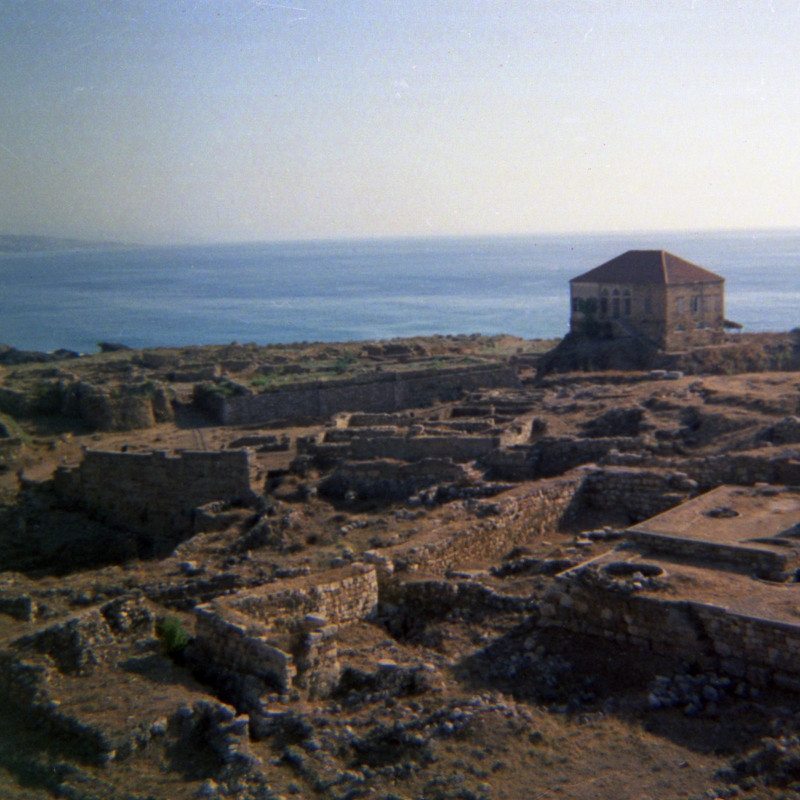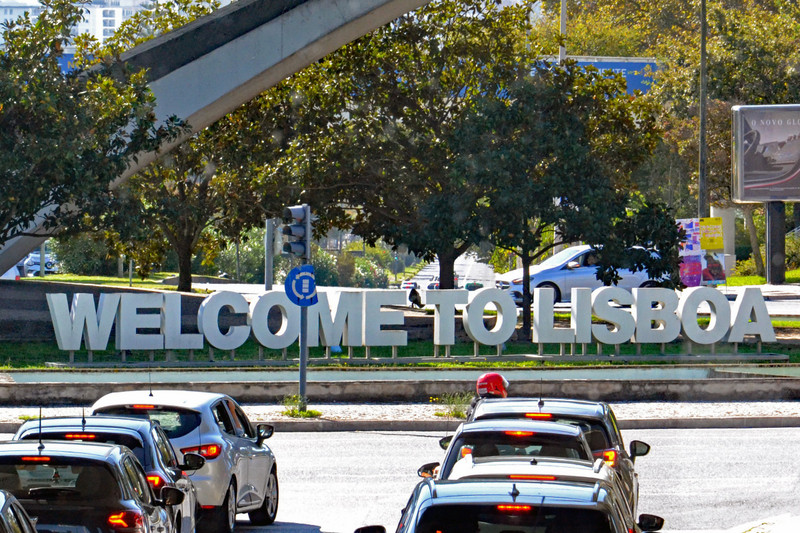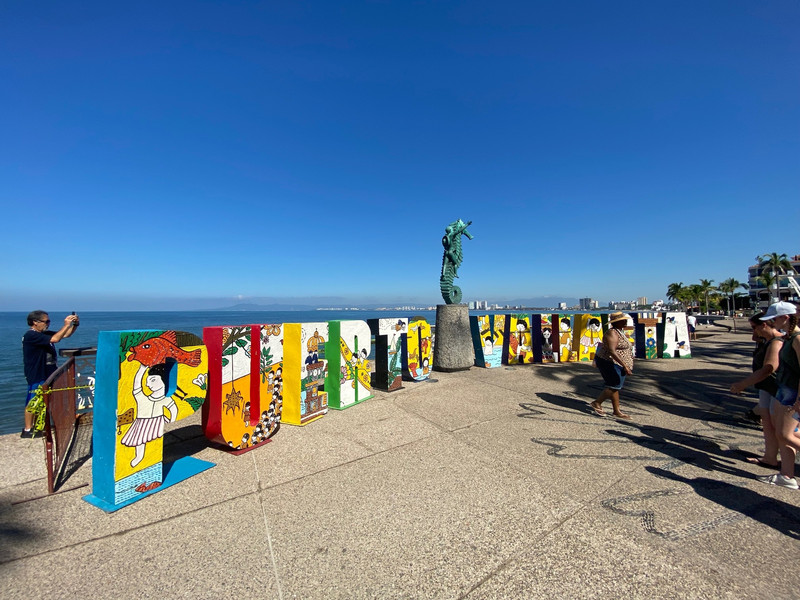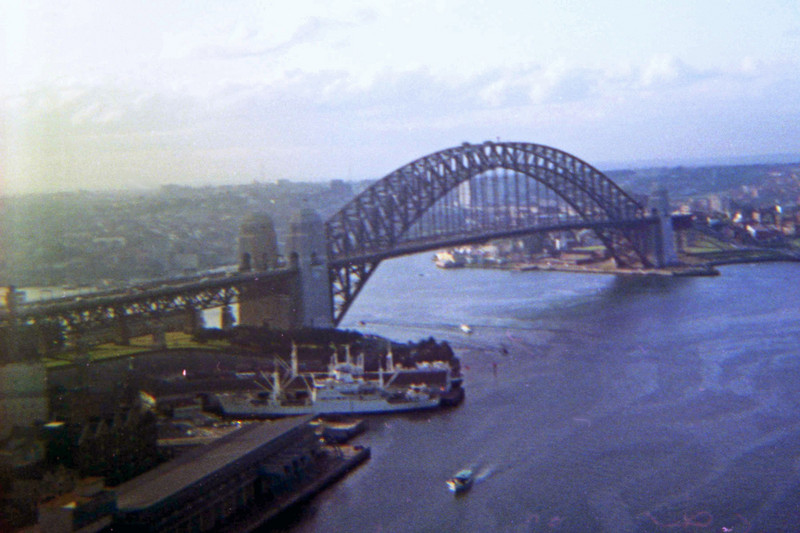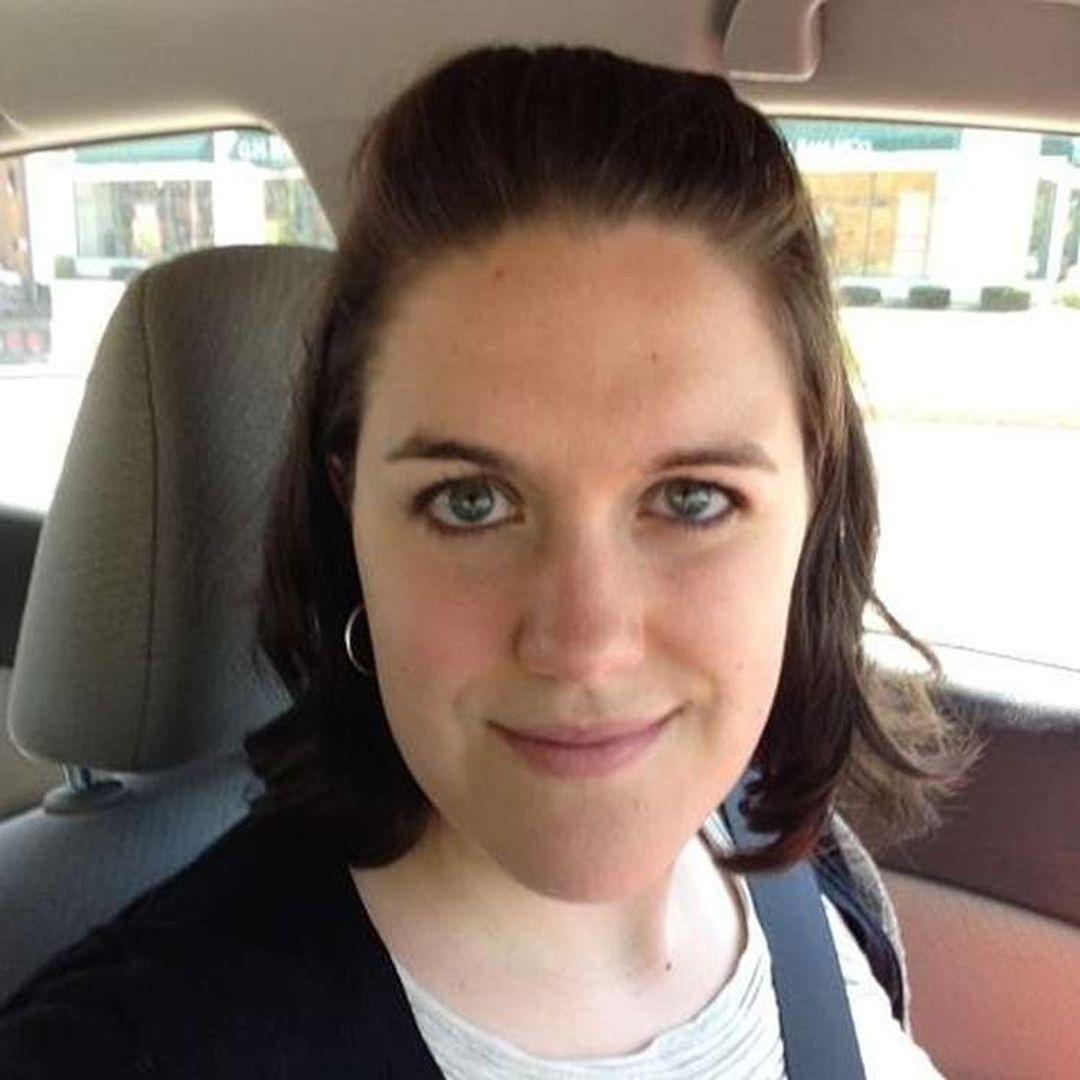Byblos archaeological site, Lebanon. Byblos has been continuously inhabited for 7,000 years. Excavations of the ancient cities began in 1925. Byblos is Papyrus in Greek as it was an ancient centre of papyrus trade. The modern era Lebanese house shows the difference in ground level over the centuries. World041
Beiruit was the eighth stop on the 1963 trip. The Pan American flight from New Delhi arrived at 6:15 in the morning. Our hotel in Beirut was the Hotel Phoenicia InterContinental.
In 1963 Beirut was a very modern and cosmopolitan city, with a decidedly French air. (French was understood language, rather than English.) Followers of Christianity and Islam mingled freely and daily activity focused on the Corniche.
The famous Cedars of Lebanon were shown by motorcoach. But the highlight in Lebanon was the trip up to the ruins of ancient Byblos.
Byblos has been continuously inhabited for 7,000 years. (The contemporary town, adjacent to the ruins, is called Jibail.) Excavations of the ancient cities, one on top of the other, began in 1925. Byblos is the word for Papyrus in Greek as it was an ancient centre of papyrus trade. Hence its lasting association with books and writing. A modern era Lebanese house amid the excavations shows the difference in ground level over the centuries.
Byblos provides the root for biblion (book) in Greek; bibliotheca (a place where books are kept: i.e. papyrus rolls) in Latin; Bible, bibliographic and bibliography in English; bibliothque in
Byblos archaeological site, Lebanon. Byblos has been continuously inhabited for 7,000 years. Excavations of the ancient cities began in 1925. Byblos is Papyrus in Greek as it was an ancient centre of papyrus trade. IMG00643p1
